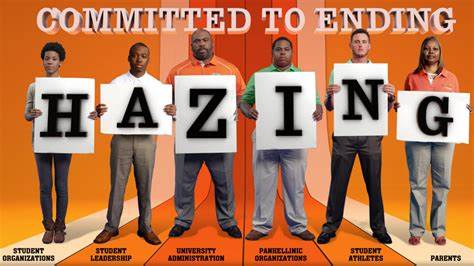Hazing A Betrayal of Trust and Safety

Hazing – Losing the trust
Hazing A Betrayal of Trust and SafetyHazing, a pervasive issue within organizations such as schools, fraternities, and sports teams, involves rituals or activities that humiliate, degrade, or endanger individuals as a condition of membership or affiliation. This harmful practice undermines safety, trust, and the well-being of its victims. Understanding the legal consequences of hazing is crucial for holding perpetrators and institutions accountable.
Section One: Definition and Context of Hazing
Initiation encompasses a wide range of behaviors, including physical abuse, psychological torment, sleep deprivation, and forced consumption of substances. While the specific manifestations may vary, the common thread is the intentional infliction of harm or discomfort upon individuals. Initiation serves as a misguided attempt to foster unity and loyalty, but its consequences often outweigh any perceived benefits.
Section Two: Legal Consequences of Initiation
Individuals and organizations involved in hazing incidents face severe legal ramifications. Anti-hazing laws exist at both the state and federal levels, criminalizing hazing activities that result in physical or emotional harm. Perpetrators may be charged with misdemeanors or felonies, depending on the severity of the offense.
Institutions that tolerate or fail to prevent abuse of power can also be held liable. Universities and other organizations have a legal duty to provide a safe environment for their students or members. Negligence in addressing Initiation incidents can result in civil lawsuits, sanctions, or even criminal charges.
Section Three: Case Studies of Accountability
Numerous legal cases have demonstrated the consequences of hazing. In 2017, a fraternity member at Penn State University was sentenced to six months in prison for his role in a Initiation incident that led to the death of a pledge. Similarly, in 2018, an incident at Florida State University resulted in criminal charges against several fraternity members, including a felony battery charge.
Institutions have also been held accountable for their failure to prevent Initiation abuse of power. In 2019, the University of Missouri was ordered to pay $6.5 million to the family of a student who died in a fraternity hazing ritual. The university was found to have ignored previous reports of hazing and failed to take adequate steps to protect students.
Section Four: Societal Implications and Recommendations
Abuse of power has far-reaching societal implications. Victims of hazing may experience physical and emotional trauma, diminished self-esteem, and difficulty forming healthy relationships. The culture of Initiation perpetuates a cycle of violence and undermines the values of trust and respect.
To address the issue of hazing, it is essential to foster a culture of accountability. Individuals who witness or are aware of hazing incidents have a responsibility to report it to authorities. Institutions must establish clear policies against hazing and implement effective prevention programs. Law enforcement and the courts must vigorously prosecute hazing offenses and hold perpetrators accountable.
Conclusion
Abuse of power through Initiation is a serious betrayal of trust and safety. The legal consequences of hazing serve as a deterrent and a reminder of the importance of accountability. Individuals and organizations must work together to eliminate this harmful practice and create environments where everyone feels valued and respected. By holding perpetrators accountable and fostering a culture of respect, we can create a society where Initiation is a thing of the past.
Sources
* [StopHazing.org](https://stophazing.org/)
* [National Hazing Prevention Week](https://www.hazingprevention.org/)
* [The Clery Act](https://www2.ed.gov/about/offices/list/ocr/cleryact.html)
* [Hazing Prevention and Accountability Act of 2021](https://www.congress.gov/bill/117th-congress/house-bill/5305)

